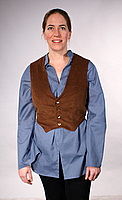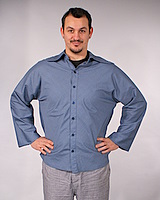|
Online Patternmaking Classes
by Don McCunn Online Class Home Page ► An Introduction ► Go To Week One How to Make an Upper Torso (aka Bodice) Sloper
The five sessions of this class include the following.
The best way to start any patternmaking process is to understand the concept of why the patterns need to be shaped the way they do. For the Upper Torso Sloper, I describe the basic concept on the pages of my book How to Make Sewing Patterns and in the videos below.
An Introduction A Drafting Demonstration The first four weeks include videos showing how to create a sloper for the upper torso that can be used for either women or men. In the fifth week you will see how to use this sloper to create a variety of design for both woven and knit fabrics including sleeveless styles and the tunic sleeve. There is another class for creating fitted set-in sleeves and sleeve variations to go along with this sloper. The videos for this class both show how to fit someone else and how to fit yourself without a sewing buddy. If you have someone to help you, the process is easier. This fitting buddy does not need to know how to sew. However, if you do not have a willing fitting buddy who will take whatever time is necessary to fit you correctly, you are better doing it yourself. You will see the abbreviations DIY (Do-It-Yourself) for these videos.
Online Class Home Page ► An Introduction ► Go To Week One
Copyright © 2007, & 2020 by Donald H. McCunn
| |||||||||||||||||||||||||||||||||||||||||||||||





